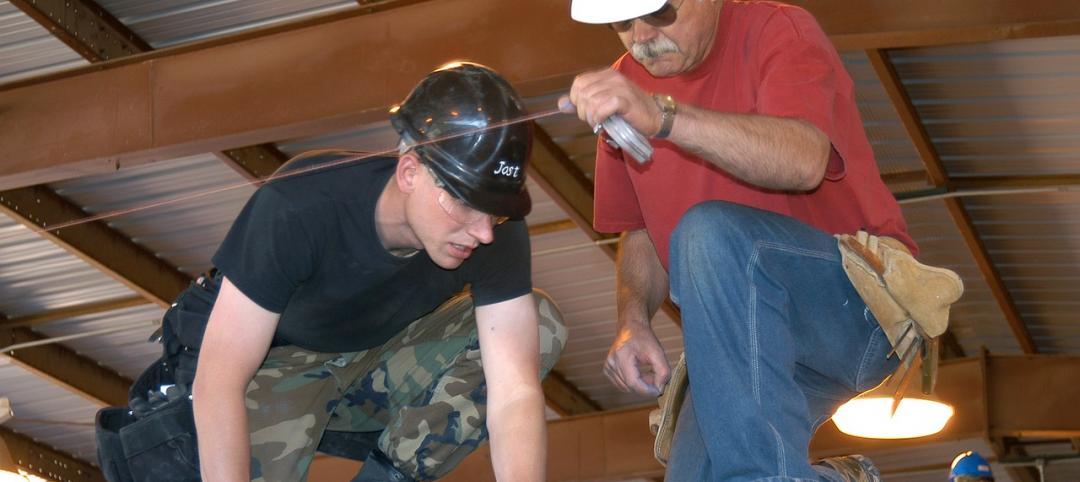Autodesk, Inc. (NASDAQ: ADSK) today released the "Construction Outlook 2021: Risks & Opportunities" report, a new study that dives into macro industry trends across five areas including growth, health and construction safety, labor, supply chain and design. As the compounding effects of the global pandemic and resulting economic instability begin to surface, aggregated and anonymized product data from BuildingConnected, a preconstruction solution within Autodesk Construction Cloud, finds that real-time bidding activity has surpassed pre-pandemic levels and reached an all-time high in January 2021.
More than one million owners, general contractors, construction managers and subcontractors use BuildingConnected to answer or request bids. More than five million bid invites are sent out every month on the platform.
Additional key insights detailed in the report derived from aggregated and anonymized BuildingConnected bidding activity, as of March 1, 2021, include:
— While bidding activity was initially on the rise at the beginning of 2020, it dropped roughly 34 percent in the 60 days following March 19 2020, when the first U.S. stay-at-home orders were mandated.
— Bidding activity slowly began to recover between March and October and hit a high for 2020 in November.
— Compared to a three-month pre-pandemic average, total bidding activity was up 15 percent in November and 36 percent in January 2021, with January volume representing an all-time high on the BuildingConnected platform.
— The rate of new projects being added to the platform throughout the past year has remained constant, indicating increased bidding activity may be related to project re-starts, not net-new projects.
"While it's not an indication that we're entirely out of the woods, the real-time bidding data from BuildingConnected suggests that delayed or rescheduled projects may be coming back online," said construction economist Ed Zarenski. "Increased levels of bidding activity, paired with the data that project volume has remained consistent, signals the industry is getting back to work – and doing so quickly."
The 2021 Construction Outlook Report provides insights into construction industry trends in spending, project starts and more
Using internal product data, external sources and industry economists, the Construction Outlook report provides construction professionals with critical information, analysis and actionable insights to stay resilient as the industry begins its journey to recovery. Additional key findings from the report include:
— New starts are up in 2021 but starting backlog in 2022 could slide: While new starts in 2021 are forecast to increase six percent – with a six percent increase in nonresidential projects and a 10 percent increase in non-building infrastructure projects, the starting backlog forecast for 2022 is projected to decrease five percent.
— Nonresidential construction spending will drop in 2021, yet healthcare and commercial retail are projected to rebound in 2022. By October 2021, nonresidential building spending is projected to decrease 20 percent from February 2020, with projected drops of two to three percent each quarter. Nonresidential spend across the board is forecast to hit $411 billion in 2021. In 2022, the healthcare and commercial / retail sectors are expected to grow by three percent and six percent, respectively.
— Transportation, air and rail sectors have been less impacted: Transportation spending is forecasted to grow 10 percent in 2021, due in part to strength in backlog from several multi-billion dollar starts over the past few years. There could also be longer-term positive impacts as the new administration has announced its focus and dedication to the health and resilience of the national transportation system.
— Additional gains will be made in other areas of nonbuilding infrastructure: Forecasted for 2021, certain segments of nonbuilding infrastructure will also see an increase in spend including sewer and water (four percent) and highways and bridges (two percent).
— Total public spending in 2021 is projected to finish at $384 billion, an eight and a half percent increase from 2020. Growth in the residential sector heavily contributes to the gains expected in total spending in 2021. Starting backlog growth is also expected to pick up in 2022, particularly for the commercial, healthcare and transportation sectors.
"In the early days of the pandemic, the construction industry turned to technology to readjust as we facilitated social distancing, implemented jobsite safety guidelines and moved our offices into our homes," Jim Lynch, senior vice president and general manager, Autodesk Construction Solutions. "Now that the industry looks to be picking up and teams are headed back to the jobsite, adopting technology, digitizing workflows and upskilling employees is more important than ever to handle the increased workload. For instance, despite a 40 percent spike in bidding volume, we're seeing that almost 80 percent of teams using BuildingConnected are still able to turn around bids in the industry-standard of seven days. Managing this increase in output with no significant dip in productivity simply would not be possible without the right technology."
Recommendations for improving preconstruction processes and mitigating risk
The report also provides recommendations for companies to help navigate the current industry climate, including:
1. Monitor the burden of project restarts: Defaults tend to rise when the construction industry moves from a period of reduced activity to a period of growth. Moving forward, specialty contractors will need to be tactful in selecting projects, and owners and general contractors will need to evaluate the health of trade partners taking on new work.
2. Qualify trade partners often: The construction market is volatile right now, and traditional annual qualification schedules may need to be conducted more frequently – ideally twice per year.
3. Coordinate the design review process: Reducing change
"As projects quickly begin coming back online, deadlines will be more stringent and every dollar will be scrutinized," said Zac Hays, head of preconstruction, Autodesk Construction Solutions. "The preconstruction process will play an increasingly vital role in mitigating risks, generating and managing critical data and reducing costly rework – which will better position companies to navigate this period of uncertainty with more precision."
The report also offers case studies from Autodesk customers including Chandos, Helm Mechanical, John Moriarty & Associates, EBC, Inc. and CRB. To read the full report, click here.
Related Stories
Contractors | Jan 15, 2016
Controlling interest in Clark Construction sold to employee group
The death of its founder last year set the wheels of this transition in motion.
| Jan 14, 2016
How to succeed with EIFS: exterior insulation and finish systems
This AIA CES Discovery course discusses the six elements of an EIFS wall assembly; common EIFS failures and how to prevent them; and EIFS and sustainability.
Market Data | Jan 13, 2016
Morgan Stanley bucks gloom and doom, thinks U.S. economy has legs through 2020
Strong job growth and dwindling consumer debt give rise to hope.
Contractors | Jan 13, 2016
5 ways to handle conflict during construction
Rider Levett Bucknall's John Jozwick has five ways to curb disputes and prevent the situation from escalating to litigation.
Contractors | Jan 12, 2016
Will a notable credential make students preparing for construction jobs more marketable?
Zenith Education Group thinks so, as nine of its campuses offer training certification from the National Center of Construction Education and Research.
Contractors | Jan 11, 2016
Novum Structures will pay $3 million to settle violations of ‘Buy American’ regulations
Wisconsin design and construction firm charged with repackaging materials from foreign sources.
Market Data | Jan 6, 2016
Census Bureau revises 10 years’ worth of construction spending figures
The largest revisions came in the last two years and were largely upward.
Market Data | Jan 5, 2016
Majority of AEC firms saw growth in 2015, remain optimistic for 2016: BD+C survey
By all indications, 2015 was another solid year for U.S. architecture, engineering, and construction firms.
Architects | Jan 5, 2016
Potential vs. credential: How men and women differ in career progress
Recent research suggests that women face yet another career impediment: the confidence gap.
Urban Planning | Jan 4, 2016
The next boomtown? Construction and redevelopment sizzle in San Diego
The city's emission-reduction plan could drive influx into downtown
















